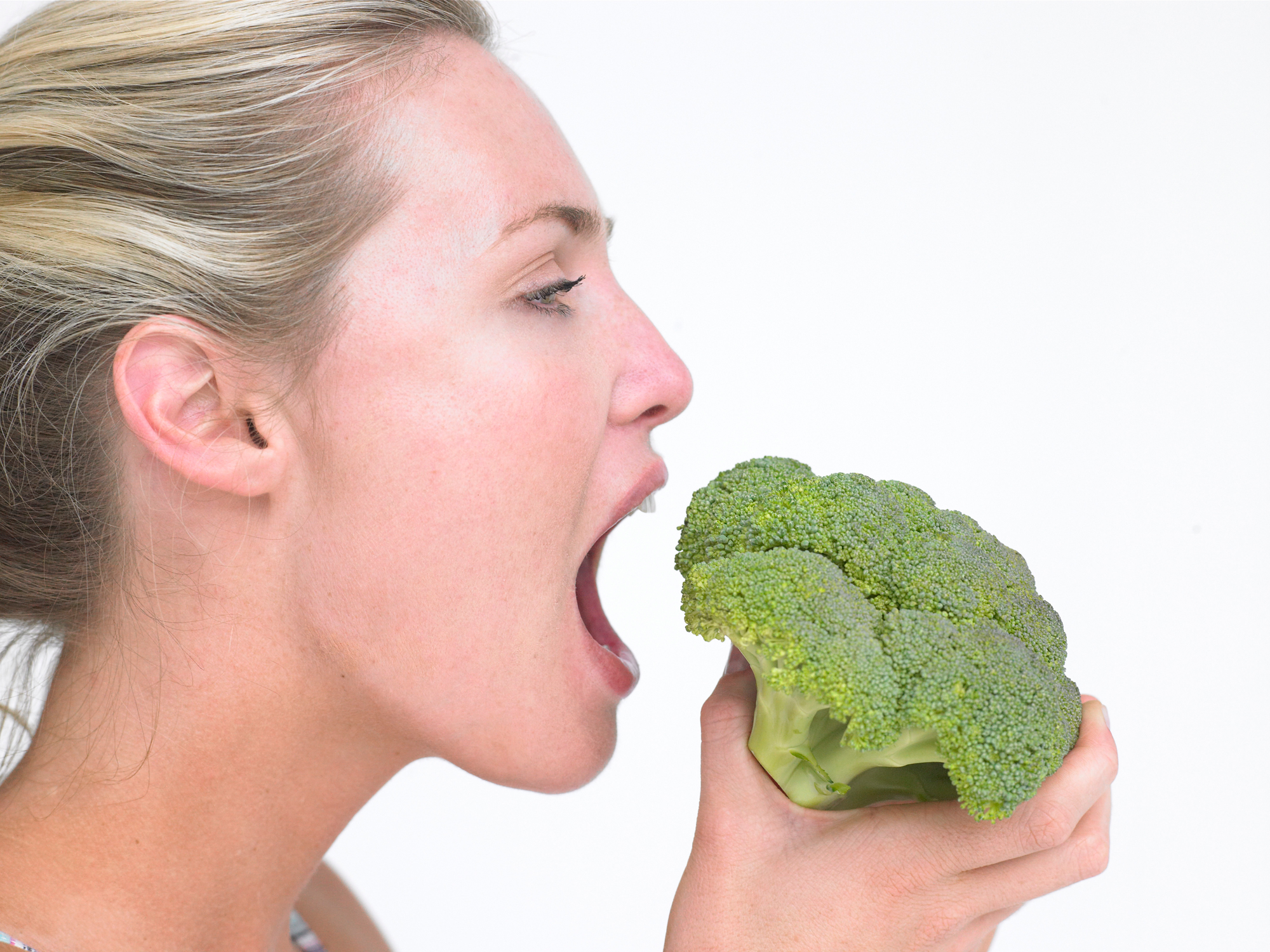Get Easy Health Digest™ in your inbox and don’t miss a thing when you subscribe today. Plus, get the free bonus report, Mother Nature’s Tips, Tricks and Remedies for Cholesterol, Blood Pressure & Blood Sugar as my way of saying welcome to the community!
How much broccoli must you eat to fight cancer?

Nearly everyone knows that the little green tree known as broccoli is an incredibly healthy food.
Here at Easy Health Options, my colleagues have previously shared some of its incredible benefits — it boosts antioxidant absorption, prevents aging at the cellular level, lowers risk for digestive problems, and even strengthens bones.
Now, a recent study has revealed that broccoli has super cancer-fighting powers…
A compound called sulforaphane, naturally contained in broccoli, was found to have chemoprotective effects against prostate cancer.
Beyond prostate cancer, it has also been found to have anticancer effects on colon cancer, lung tumors and breast cancer.
One study in premenopausal women found that the more broccoli they ate, the less likely they were to be diagnosed with breast cancer. Other cellular studies have shown that sulforaphane can reduce cancer stem cells in breast tissue by 65 to 85 percent.
Sulforaphane is a phytonutrient that is not only found in broccoli but cabbage, cauliflower and other cruciferous vegetables as well. This powerful phytonutrient works its magic by inhibiting cancer stem cells. It also has the ability to reverse the dangerous gene alterations (known as epigenetic changes) involved in cancer growth.
Even if you already have cancer, sulforaphane can still be a big help to you, as it’s even been shown to increase the effectiveness of chemotherapy!
So, you may be wondering, just how much broccoli does it take to reduce your risk of cancer?
Well, scientists haven’t found an ideal amount of sulforaphane needed to prevent cancer (just yet). So the message here is to eat broccoli on a regular basis. I’d recommend aiming for three to five servings of broccoli per week.
When it comes to sulforaphane, you also need to pick your broccoli wisely, as certain types of broccoli are better than others.
Curiously, young sprouts of broccoli (also known as broccolini) contain 20 to 50 times more sulforaphane than mature broccoli plants.
Another thing worth mentioning is that broccoli stalks contain very little sulforaphane, but the florets are chock full of it.
You also want to avoid overcooking your broccoli, as that can reduce the sulforaphane content — steaming broccoli is the best way to eat it. But try doing it in the microwave. Mounting evidence shows that microwaving may help food retain nutrients and beneficial compounds better than other heating methods.
But, sticking to steaming can get a bit dull and boring, so to make sure you get your share of anti-cancer benefits, you can also try to incorporate broccoli into your diet in the following ways:
- Blend broccoli into a green smoothie – you won’t even taste it.
- Roast it! Smother in olive oil and simply pop it in the oven (390°F) for 20-25 minutes — it’s great seasoned with garlic, salt and pepper.
- Add it raw to your salads for some extra crunch.
- Always include it in soups, stir-fries casseroles and stews.
- Chop it up into small pieces and add it to spaghetti sauce.
And here’s a great tip: pair it with spicy foods such as wasabi, horseradish, or mustard. These spicy foods contain an enzyme called myrosinase that aids the absorption of all of broccoli’s phytonutrient goodness.
Editor’s note: Discover how to live a cancer prevention lifestyle — using foods, vitamins, minerals and herbs — as well as little-known therapies allowed in other countries but denied to you by American mainstream medicine. Click here to discover Surviving Cancer! A Comprehensive Guide to Understanding the Causes, Treatments and Big Business Behind Medicine’s Most Frightening Diagnosis!
Sources:
-
Beaver LM, et al. Long noncoding RNAs and sulforaphane: a target for chemoprevention and suppression of prostate cancer. — Journal of Nutritional Biochemistry. 2017;4:72-83.
-
Kim BG, et al. Sulforaphane, a natural component of broccoli, inhibits vestibular schwannoma growth in vitro and in vivo. — Scientific Reports. 2016;6:advance online publication.
-
Ambrosone CB, et al. Breast Cancer risk in premenopausal women is inversely associated with consumption of broccoli, a source of isothiocyanates, but is not modified by GST genotype. — Journal of Nutrition. 2004;134(5),1134-1138.
-
Li Y, et al. Sulforaphane, a dietary component of broccoli/broccoli sprouts, inhibits breast cancer stem cells. — Clinical Cancer Research. 2010;16(9):2580-2590.
-
Tortorella SM, et al. Dietary sulforaphane in cancer chemoprevention: The role of epigenetic regulation and HDAC inhibition. — Antioxidants and Redox Signaling. 2015;22(16):1382-1424.
-
Totusek J, et al. Contents of sulforaphane and total isothiocyanates, antimutagenic activity, and inhibition of clastogenicity in pulp juices from cruciferous plants. — Czech Journal of Food Sciences. 2011;29(5):548-556.
-
Wang X, et al. Sulforaphane improves chemotherapy efficacy by targeting cancer stem cell-like properties via the miR-124/IL-6R/STAT3 axis. — Scientific Report. 2016;6:advance online publication.












